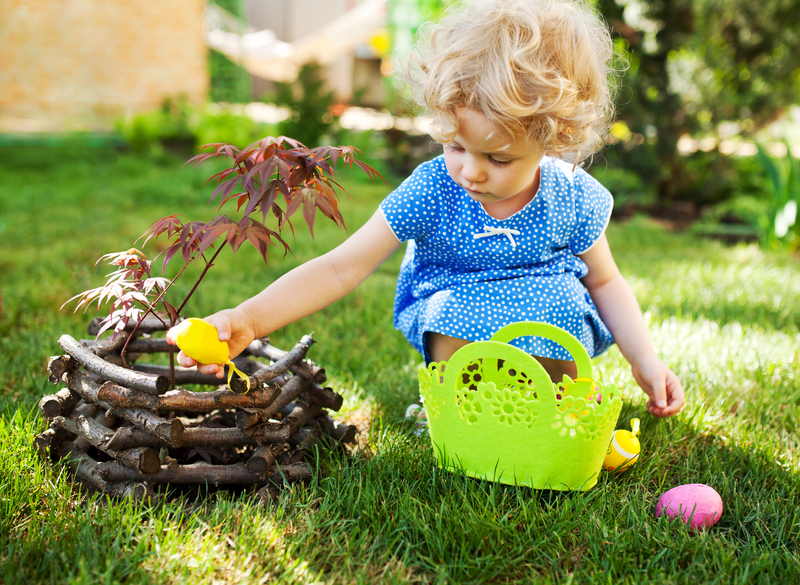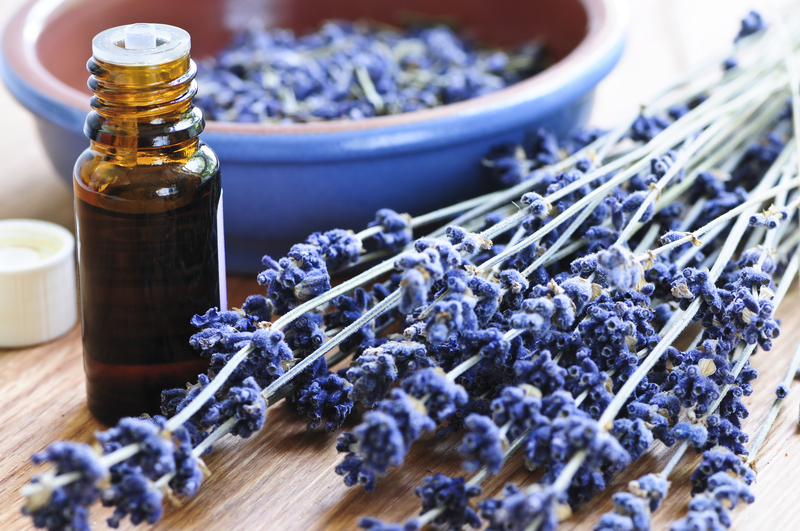Enhance the Lifespan of Your Velvet Curtains with Proper Washing
Posted on 25/09/2025
Enhance the Lifespan of Your Velvet Curtains with Proper Washing
Velvet curtains add a touch of elegance, luxury, and sophistication to any living space. However, their plush and delicate nature requires special attention when it comes to cleaning and maintenance. Understanding how proper washing can extend the lifespan of your velvet curtains not only preserves their appearance but also saves you money in the long run. In this comprehensive guide, we'll explore the best practices for washing velvet curtains, preventing common issues, and ensuring they remain stunning for years to come.
The Importance of Proper Velvet Curtain Care
Velvet is a unique fabric created by weaving two thicknesses of material together, then cutting apart to create a dense pile. This process results in its characteristic soft texture and sheen, but also makes it more susceptible to damage from excessive moisture, harsh chemicals, and improper handling. Caring for velvet drapes the right way can:
- Prevent fading and color loss
- Maintain the fabric's luxurious sheen
- Avoid matting or crushing of the pile
- Extend the overall lifespan of the curtains
- Save on costly replacements or professional cleaning fees
When you learn the correct method to wash velvet curtains, you ensure their longevity and keep them looking as stunning as the day you bought them.

Types of Velvet Used in Curtains
Before diving into cleaning methods, it's crucial to recognize the different types of velvet used in curtains. The type of velvet can influence how you should wash and care for your window treatments:
1. Cotton Velvet
Cotton velvet is soft, breathable, and relatively durable, but it can shrink if washed improperly. It's more sensitive to water and may require dry cleaning for best results.
2. Synthetic Velvet (Polyester, Nylon or Rayon)
Synthetic velvets tend to be more resilient and can sometimes be machine-washed on gentle cycles. Always check the manufacturer's care label first.
3. Silk Velvet
Silk velvet is the most delicate and expensive variety. It's best cared for with professional dry cleaning, as water and agitation can easily damage its fibers.
No matter the type, always double-check the curtain's care instructions. When in doubt, err on the side of caution or consult a professional.
How Often Should You Wash Velvet Curtains?
The frequency of cleaning velvet drapes depends on several factors such as exposure to dust, humidity, and household odors. Generally, it's advised to give your velvet curtains a gentle shake and a light vacuum once a week to remove surface dust. Deep cleaning or washing should be done every 6-12 months or as needed.
- High-traffic areas: Clean more frequently due to higher dust and pollutants.
- Spill or stain: Spot-clean immediately to prevent permanent marks.
- Pet owners or allergy sufferers: May require more regular cleaning to manage allergens.
Preparation Before Washing Velvet Curtains
Proper preparation can make all the difference in prolonging the life of your velvet curtains:
- Check the Care Label: Always start by reading and following the manufacturer's recommendations. Some velvet curtains are strictly "dry clean only."
- Remove All Hardware: Take down rods, hooks, and weights to prevent snags or tears during cleaning.
- Shake Out Dust: Gently shake the curtains or use a soft-bristled brush or vacuum with an upholstery attachment to remove loose dust and debris.
- Test for Colorfastness: Dampen a hidden area with water and gently blot with a white cloth. If color transfers, avoid washing in water.
- Spot Clean Stains: Use a mild detergent and soft cloth to gently blot (not rub) any visible stains. Blot from the outside in to avoid spreading the stain.
Different Methods to Wash Velvet Curtains
The way you clean your velvet drapes depends on their specific material and condition. Here are the most common and recommended methods:
1. Dry Cleaning
For the vast majority of velvet curtains--especially those made from cotton, silk, or blended fabrics--dry cleaning is recommended. Velvet's dense pile can hold onto water, leading to wrinkling, matting, or shrinking. Professional dry cleaners will ensure thorough cleaning while minimizing risk of damage. Tip: Opt for a cleaner with experience in handling delicate fabrics.
2. Hand Washing Velvet Curtains
If your care label allows for hand washing, follow these precautions:
- Use Cold Water and Mild Detergent: Fill a large basin or tub with cold water and add a gentle, bleach-free detergent. Avoid hot water, which can shrink and damage velvet.
- Submerge Gently: Place the curtain in the water and gently press it down. Do not rub or wring. Swish gently to allow detergent to lift dirt.
- Rinse Thoroughly: Rinse with multiple changes of cold water until all soap is gone.
- Press Excess Water: Do not twist or wring. Instead, press the water out gently or roll the curtain in a clean towel to absorb extra moisture.
3. Machine Washing Velvet Curtains
Some synthetic velvet curtains can be machine washed. Only use this method if the care instructions allow:
- Select Gentle Cycle: Set the washing machine to the most delicate cycle with cold water.
- Use Mesh Laundry Bags: Place the curtains in large mesh bags to avoid abrasion and stretching.
- Mild Detergent: Use a minimal amount of mild detergent formulated for delicates.
- Avoid Overcrowding: Wash one panel at a time for best results.
Remember: Never use bleach or fabric softener on velvet curtains. These can alter the fabric's texture and integrity.
Drying Velvet Curtains
Proper drying techniques are just as important as washing in maintaining the longevity of velvet curtains:
- Do Not Tumble Dry: Avoid using a clothes dryer. The intense heat and tumbling action can flatten and distort the pile, leading to loss of texture.
- Air Dry Flat: Lay the curtains flat on a clean, dry towel or hang them up away from direct sunlight. Ensure even air circulation to prevent mildew.
- Reshape Gently: If laying flat, occasionally rearrange the fabric to help preserve its original shape and drape.
- Avoid Sunlight: Direct sunlight can fade colors unevenly. Dry your velvet curtains in a shaded, ventilated area.
Ironing and Steaming Velvet Curtains
Ironing velvet directly can crush its pile and cause permanent damage. Instead, try these techniques:
- Steam for Wrinkle Removal: Use a handheld steamer, holding it 1-2 inches away and moving steadily. The steam penetrates without flattening the nap.
- Steam Without Steamer: Hang the curtains in a steamy bathroom for 10-15 minutes to release light wrinkles.
- Velvet Board: If you must iron, place the curtain face down on a velvet board and use the lowest heat setting. Place a piece of cloth between the iron and fabric for added protection.
Always test on an inconspicuous area first to ensure no damage occurs.
Common Mistakes to Avoid When Cleaning Velvet Curtains
Enhancing the lifespan of velvet curtains means steering clear of these common pitfalls:
- Ignoring Care Labels: The most frequent mistake is neglecting to read the curtain's care instructions.
- Using the Wrong Cleaning Products: Avoid bleach, heavy-duty detergents, or abrasive cleaners that could break down fibers.
- Excessive Handling: Rubbing, wringing, or stretching velvet can permanently alter its appearance.
- Drying in Sunlight: Strong sunlight can create faded patches and weaken fabric fibers.
- Overwashing: Velvet does not need frequent full washes. Stick to spot cleaning and light dust removal between deeper cleans.
Additional Maintenance Tips for Velvet Curtains
- Regular Dusting: Use a soft upholstery brush or vacuum once a week to maintain a dust-free finish.
- Prompt Stain Treatment: Address spots immediately to prevent staining. Blot gently with cold water and a soft cloth.
- Rotate Curtains: Rotate your curtains seasonally to expose them evenly to light and wear. This helps in avoiding uneven fading or wear patterns.
- Cool, Dry Storage: If the curtains need to be stored, keep them in a cool, dry place. Store flat or loosely rolled to avoid creasing.
Benefits of Extending the Lifespan of Velvet Curtains
By following these tailored care guidelines, you will not only preserve the beauty and texture of your velvet drapes but also enjoy these advantages:
- Financial Savings: Proper maintenance extends the life of your curtains, reducing the need for frequent replacement.
- Improved Indoor Air Quality: Regular cleaning removes dust, pollen, and allergens trapped within velvet fibers.
- Consistent Aesthetic Appeal: Well-cared-for velvet curtains maintain their color, luster, and luxurious look, enhancing your room's decor.
- Enhanced Property Value: Beautiful window treatments can increase your home's appeal to potential buyers or guests.

Frequently Asked Questions (FAQs)
Can I use a washing machine for all velvet curtains?
No, not all velvet curtains are safe for machine washing. Check the care label for instructions. Generally, only synthetic velvet may be machine washed, and even then, use a gentle cycle with cold water.
How do I remove wrinkles from velvet curtains?
Steaming is the safest way to remove wrinkles. Avoid ironing directly; if necessary, use a velvet board and a protective cloth on low heat.
Is it safe to use fabric fresheners on velvet?
Most fabric fresheners are not recommended for velvet, as they may leave stains or affect the texture. When in doubt, test on an inconspicuous spot first.
What should I do if velvet curtains become crushed?
Hang the curtain and use a steamer to lift the pile gently. Severe matting may require professional restoration or cleaning.
Can I hang velvet curtains to dry after washing?
Yes, but avoid direct sunlight. It is better to lay them flat or hang them indoors where air circulates freely.
Conclusion: Keep Your Velvet Curtains Looking Luxurious for Years
With proper handling and a smart washing approach, you can enhance the lifespan of your velvet curtains significantly. Remember, the key to longevity lies in understanding the fabric, following care instructions, using gentle cleaning methods, and handling with care during washing and drying. If in doubt, professional cleaning is always a safe choice for velvet window treatments. By integrating these strategies, your luxurious curtains will continue to beautify your home and serve as a testament to your refined taste and attention to detail for many years to come.




 Dry Carpet Cleaning
Dry Carpet Cleaning
 Mattress Cleaning
Mattress Cleaning
 Leather Sofa Cleaning
Leather Sofa Cleaning